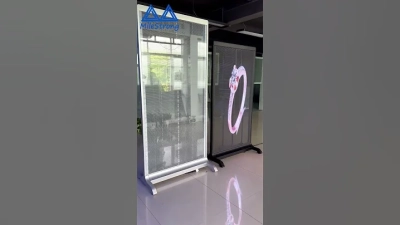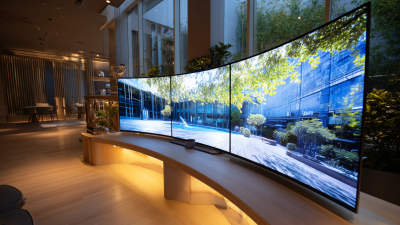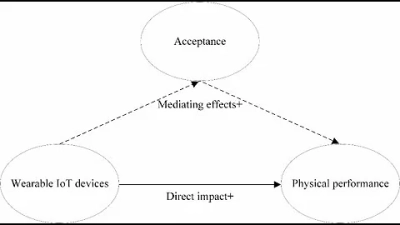
-
Home
-
Products
-
About Us
-
Case
-
News
-
BLOG
-
FAQ
-
Contact Us
Leave Your Message

In today's rapidly evolving aquatic environments, the implementation of Transparent Diving Screens has emerged as a game-changer for maximizing the return on investment (ROI) in various applications, from underwater tourism to marine research facilities.
 These innovative screens not only enhance visibility and safety for divers but also serve as a captivating attraction for visitors, thus driving revenue growth. As organizations seek to optimize their operations and create immersive experiences, understanding how to effectively utilize Transparent Diving Screens becomes crucial.
This blog explores seven strategic approaches that can help businesses leverage these cutting-edge installations for maximum ROI, ensuring that both their practical benefits and commercial potential are fully realized.
Join us as we delve into actionable insights that will transform your aquatic initiatives and set a new standard for success in the industry.
These innovative screens not only enhance visibility and safety for divers but also serve as a captivating attraction for visitors, thus driving revenue growth. As organizations seek to optimize their operations and create immersive experiences, understanding how to effectively utilize Transparent Diving Screens becomes crucial.
This blog explores seven strategic approaches that can help businesses leverage these cutting-edge installations for maximum ROI, ensuring that both their practical benefits and commercial potential are fully realized.
Join us as we delve into actionable insights that will transform your aquatic initiatives and set a new standard for success in the industry.
Transparent diving screens play a critical role in enhancing safety and visibility in aquatic environments. These screens serve not only as physical barriers to protect divers and marine life but also as visual aids that promote a deeper understanding of the underwater ecosystem. By providing clear views, they allow both divers and spectators to engage more fully with the surrounding environment, fostering a greater appreciation for marine conservation.
Tip: To utilize transparent diving screens effectively, consider their placement carefully. Strategically positioning the screens can minimize disturbances to aquatic life while maximizing visibility for divers. Additionally, ensure that the materials used for the screens are durable and resistant to corrosion, providing long-lasting benefits in the challenging aquatic environment.
Another noteworthy benefit of transparent diving screens is their ability to facilitate educational experiences. By integrating these screens into diving programs or tourism, organizations can enhance learning opportunities about marine biology. This not only enriches participants' experiences but also helps in spreading awareness about the importance of environmental conservation.
Tip: Incorporate interactive elements, such as informational plaques or guided tours, alongside transparent screens. This combination can significantly elevate the educational potential and create engaging experiences for both divers and visitors alike.
When it comes to selecting the right material for transparent diving screens in aquatic environments, a few key factors must be considered to ensure both functionality and ROI. According to a report by MarketsandMarkets, the global market for acrylic and polycarbonate materials is projected to reach $7.6 billion by 2025, driven by their excellent optical clarity and resistance to impact. Acrylic, often favored for its visibility and light weight, offers a superior aesthetic that enhances underwater experiences while ensuring safety for divers and marine life alike.
In addition, polycarbonate is emerging as a strong contender due to its durability and resistance to harsh environmental factors. A study by Smithers Pira highlights that polycarbonate can withstand extreme temperatures and resist UV degradation, making it suitable for outdoor aquatic installations. This longevity can significantly reduce maintenance costs over time. As businesses look to maximize their ROI, choosing materials that not only meet safety standards but also provide lasting performance amidst varying aquatic conditions can make all the difference in the success of diving screen installations.
When considering the implementation of transparent diving screens in aquatic environments, it's essential to identify the key features that can enhance their effectiveness. One crucial attribute is the material used in the screens. Look for high-quality, durable materials that offer excellent visibility while also being able to withstand harsh aquatic conditions. Options like acrylic or polycarbonate provide both clarity and resilience, ensuring that your investment remains intact even in high-traffic areas.
Another important feature is the adaptability of the screens. Opt for designs that can be easily adjusted or reconfigured to suit changing environments or specific needs. This versatility allows for more effective usage, whether for personal or recreational diving activities. Additionally, consider screens that are easy to maintain and clean, as this will save time and effort while ensuring a safe and enjoyable experience in the water. With these essential features in mind, you can maximize the return on investment for your transparent diving screens and enhance your aquatic environment significantly.
When installing transparent diving screens in aquatic environments, it's essential to prioritize both visibility and safety. One best practice is to ensure proper placement. Screens should be installed in areas with high visibility and minimal obstruction, allowing divers and water users to see and be seen clearly. This positioning not only enhances safety but also promotes an enjoyable experience by creating a more open and welcoming environment.
Furthermore, utilizing durable and marine-grade materials is crucial for the longevity and effectiveness of the screens. These materials can withstand harsh underwater conditions, preventing wear and tear that could compromise visibility and safety over time. Regular maintenance and inspections of the screens are also vital to ensure they remain in top condition, providing an unobstructed view for everyone in the aquatic space. By focusing on these installation best practices, you can effectively maximize ROI while guaranteeing a safe and enjoyable diving experience.
Measuring the return on investment (ROI) for transparent diving screens in aquatic environments is essential for understanding their impact on user engagement and overall effectiveness. To accurately track ROI, it's crucial to establish clear metrics before implementation. This involves defining specific goals such as increased visitor time, improved interaction rates, or enhanced educational outcomes. By setting these benchmarks, organizations can gauge whether the screens are meeting their intended objectives.
Once the metrics are set, the next step is to deploy analytics tools that can capture user data effectively. Tracking user interactions through heat maps, click rates, and engagement duration provides valuable insights into how visitors interact with the screens. Additionally, qualitative feedback collected through visitor surveys can illuminate areas for improvement.
Combining quantitative and qualitative data allows for a comprehensive understanding of the screens' effectiveness, ensuring that any adjustments made are data-driven and targeted toward enhancing user experience. Ultimately, this strategic approach to measuring ROI will not only maximize the investment in transparent diving screens but also foster a deeper connection between visitors and aquatic environments.





